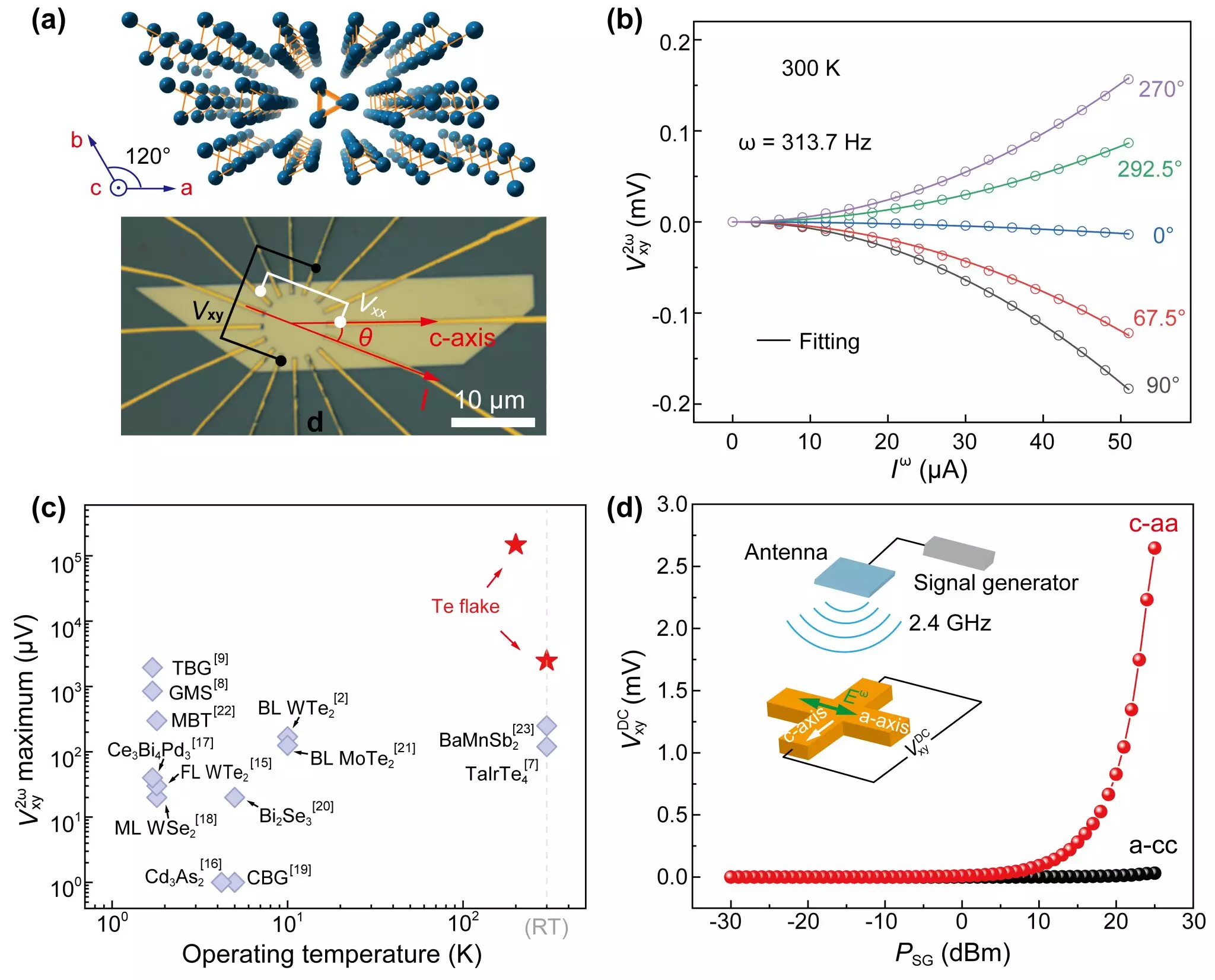Recent advancements in semiconductor research have brought to light the remarkable nonlinear Hall effect (NLHE) and wireless rectification capabilities of elemental tellurium (Te) at room temperature. This groundbreaking work, published in Nature Communications, signifies a critical step forward in the field of semiconductor physics, particularly concerning practical applications that leverage nonlinear electronic responses.
The nonlinear Hall effect is a second-order response to alternating currents, capable of generating second-harmonic signals without the need for external magnetic fields. Historically, this phenomenon has garnered considerable attention within the scientific community due to its implications for frequency-doubling technologies and rectification devices. Despite its potential, previous investigations into NLHE have been plagued by significant limitations, including insufficient Hall voltage outputs and operational demands restricted to low temperatures.
Prior to the findings concerning tellurium, NLHE had been identified in materials like BaMnSb2 and TaIrTe4, which, while noteworthy, presented challenges such as limited voltage outputs and the inability to finely tune performance. This gap in practical usability fueled the need for exploration into alternative semiconductor materials that could better exhibit NLHE properties.
This is where tellurium emerges as an exceptional candidate. A narrow-bandgap semiconductor characterized by one-dimensional helical chain structures, tellurium naturally breaks inversion symmetry. This intrinsic property is pivotal for realizing effective NLHE. The research team, driven by the urge to uncover systems exhibiting potent NLHE characteristics, meticulously examined the thin flakes of Te and discovered that room temperature nonlinear responses are not only achievable but also can lead to substantial tunability in Hall voltage outputs when influenced by external gate voltages.
Remarkably, the research demonstrated a maximum second-harmonic output of 2.8 mV at room temperature—an impressive enhancement compared to previous records. Through rigorous experimental methods and theoretical explorations, the team established that extrinsic scattering predominantly drives the NLHE observed in tellurium thin flakes, whereby the structural symmetry break at the surface of the flakes plays a vital role.
Building on these findings, the research group innovatively replaced the standard AC current with radiofrequency (RF) signals, effectively achieving wireless RF rectification using tellurium. The results were promising, with stable rectified voltage outputs spanning an extensive frequency range from 0.3 to 4.5 GHz. This advancement heralds a paradigm shift in the development of rectifying devices, distinguishing itself from traditional rectifiers dependent on p-n junctions or metal-semiconductor interfaces. Instead, the intrinsic characteristics of tellurium enable a broad response to external stimuli without bias, making it a compelling candidate for energy harvesting and wireless charging applications.
The exploration and elucidation of NLHE in tellurium not only deepen our comprehension of nonlinear transport phenomena but also serve as a catalyst for the advancement of sophisticated electronic devices. The implications of this research extend far beyond theoretical discussions; they encapsulate a vision for future technologies that harness energy more efficiently. Spearheaded by esteemed researchers from the University of Science and Technology of China, this study marks a pivotal moment in semiconductor research, illuminating a path toward innovative electronic solutions in the years to come.


Leave a Reply